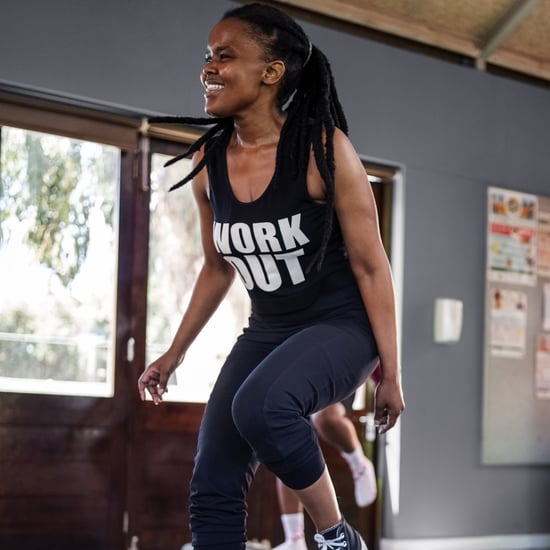How to Find Target Heart Rate
Learn Your Target Heart Rate to Work Smarter, Not Harder

Whether you run, bike, swim, or lift, knowing how to find your target heart rate can help you achieve maximum results. You might be asking: What is a resting heart rate? What's a maximum heart rate? Can this math help make the most of every workout? Knowing your heart rate cues can help you work smarter, instead of harder, and see results faster. But let's start with the basics: what does "heart rate" mean?
Resting Heart Rate
Simply put, your heart rate is the number of times your heart beats in a minute. We spoke with chiropractor and certified strength and condition specialist Alex Tauber, who recommends this simple technique to find your resting heart rate. Before exercise, Alex says, to measure your resting heart rate, "put your index and middle finger on the notch right below the hinge of your jaw." When you feel the pulse, start counting for 30 seconds, and multiply the number you get by two to get the number of beats per minute, and that's your resting heart rate.
Maximum Heart Rate Formula
The Mayo Clinic suggests using a simple mathematical formula to calculate it. Simply subtract your age from the number 220 to find your maximum heart rate. For example, if you're 30 years old, you subtract 30 from 220 to determine that 190 beats per minute is your maximum heart rate. You can only sustain your maximum heart rate for a few seconds before you collapse from exhaustion. If you have a medical condition and need a more specific number, a doctor or sports laboratory can perform a stress test to determine your maximum and target heart rates.
Finding Your Target Heart Rate
When you're at rest during a workout session, your heart rate should be low, you feel comfortable, breathing comes easily, and you can handle a conversation with your workout buddy. As your intensity increases, your heart rate rises, breathing becomes more difficult, and you may only be able to utter a word or two at a time. Somewhere between your resting heart rate and maximum heart rate is the gold standard for exercise.
NASM Certified Personal Trainer and ACE Certified Group Fitness Instructor Cassy Velez told us that once you know your maximum heart rate, "you'll be able to determine your target heart rate zone depending on the level of intensity of your workout." Your target heart rate range is simple calculation, i.e. 65 percent to 75 percent of your max heart rate. Your target heart rate should be sustainable for the duration of your workout, but the intensity zone, at 85 percent of your max, is the zone that gets you to your maximum results most quickly — but you likely can't hang out there for the entire workout. Push yourself and then back off to bring your heart rate back to a hard but sustainable rate. Your realistic goal should be to stay in the range of 50 to 85 percent of your maximum heart rate during each workout.
Working With Your Target Heart Rate
Knowing your resting, maximum, and target heart rate can get you to your goals faster and eliminate any wasted time on the road or in the gym. After calculating your maximum heart rate using the formula above, you can easily keep track of your heart rate with a heart rate monitor before, during, and after your workout. Or count your pulse under your jawbone just like how you found your resting heart rate.
If you are consistently exercising at a lower heart rate than your target zone, you know it's time to increase the intensity. If your heart rate exceeds 85 percent of your maximum, you can lower the intensity, by slowing down your speed if you're running or cycling, and make exercise more comfortable and sustainable. Do the math and listen to your body to zero in on that target heart rate for maximum success.
The fitter you become, the longer you will be able to push yourself in the upper range of your target heart rate. As you get stronger, track your heart rate in an app or a workout journal, and notice when it changes and look for patterns. Has your heart rate changed since you started working out? Has your resting heart rate lowered? These are good things and mean you're getting fitter. It also means you will need to increase your intensity during workouts to continue to see progress. There are exercises or workouts that increase your heart rate more quickly, like HIIT or Tabata, which give you continued after-burn effect that lets you burn calories even when your workout is over.
Trouble Staying in the Zone
Don't give up. There may be legitimate reasons that you struggle to stay in the target heart rate zone. If you find it difficult to raise or lower your heart rate during exercise, talk to your doctor, a cardiologist, or an exercise physiologist to determine whether exercise is safe for you and to reset your goals. A medical professional can order a stress test to accurately determine your maximum heart rate and help you structure goals that fit your needs.






